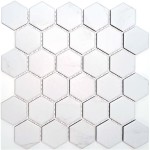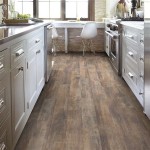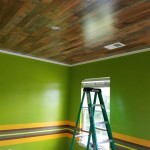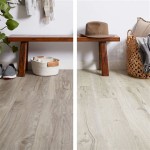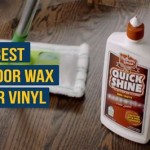How to Remove Scratches from Laminate Flooring
Laminate flooring, a popular and often budget-friendly alternative to hardwood, is known for its durability and ease of maintenance. However, even with proper care, laminate floors are susceptible to scratches. These blemishes can detract from the floor's overall appearance and diminish its aesthetic appeal. Understanding how to effectively remove scratches from laminate flooring can help maintain its longevity and beauty.
The visibility and severity of scratches on laminate flooring depend on several factors, including the color and texture of the flooring, the depth and width of the scratch, and the amount of light reflecting off the surface. Superficial scratches may appear as faint lines, while deeper scratches can expose the core material underneath the laminate layer, making them more noticeable and potentially vulnerable to moisture damage.
Addressing scratches promptly is crucial. Neglecting them can lead to further damage, such as the accumulation of dirt and debris within the scratches, which can exacerbate their appearance. Moreover, deep scratches can compromise the protective layer of the laminate, increasing the risk of swelling or warping due to moisture exposure, especially in areas prone to spills or humidity.
The methods for removing scratches from laminate flooring vary depending on the severity of the damage. Minor scratches may be easily addressed with simple cleaning techniques or specialized scratch repair products. More significant scratches, on the other hand, may require more intensive repair methods, such as using color-matched fillers or even replacing the damaged planks.
Assessing the Damage and Gathering Supplies
Before attempting any scratch removal method, a thorough assessment of the damage is essential. Carefully examine the scratched area to determine the depth and severity of the scratches. This assessment will help determine the most appropriate repair method and the necessary supplies.
For superficial scratches, a soft cloth and a laminate floor cleaner may suffice. For more noticeable scratches, you may need one or more of the following:
*Laminate Floor Repair Kit:
These kits typically contain a variety of color-matched fillers, applicators, and tools designed specifically for repairing laminate floors. *Wax Filler Sticks:
These sticks are available in various colors and can be used to fill in deeper scratches. *Color-Matched Markers:
These markers are designed to conceal minor scratches by blending them with the surrounding flooring. *Soft Cloths:
Essential for cleaning and buffing the repaired area. *Putty Knife or Spatula:
Used to apply and smooth out fillers. *Vacuum Cleaner or Broom:
For removing dust and debris from the area before and after repair. *Painter's Tape:
To protect surrounding areas from accidental damage during the repair process.Ensuring you have the right tools and materials before starting the repair process can streamline the process and increase the likelihood of a successful outcome. Consult the flooring manufacturer's recommendations for specific products that are compatible with your type of laminate flooring.
It is advisable to test any repair product in an inconspicuous area of the floor before applying it to the visible scratch. This test will help ensure that the product matches the color and finish of the flooring and does not cause any adverse reactions, such as discoloration or damage.
Repairing Minor Scratches
Minor scratches, often caused by everyday wear and tear, can usually be addressed with relatively simple techniques. These scratches typically do not penetrate the core layer of the laminate and are primarily cosmetic in nature.
One effective method for addressing minor scratches is using a laminate floor cleaner specifically designed for scratch removal. Apply a small amount of the cleaner to a soft cloth and gently buff the scratched area in a circular motion. The cleaner will help to fill in the scratches and blend them with the surrounding flooring. Repeat the process as needed until the scratches are less noticeable.
Another option is to use a color-matched marker designed for laminate floor repair. Select a marker that closely matches the color of your flooring. Carefully apply the marker to the scratch, following the grain of the laminate. Allow the ink to dry completely, and then wipe away any excess with a clean, soft cloth. This method works best for very fine scratches and can effectively camouflage them.
For scratches that are slightly deeper but still considered minor, a wax filler stick may be used. Choose a wax filler stick that closely matches the color of your flooring. Rub the stick over the scratch, applying gentle pressure to fill it in. Use a putty knife or spatula to remove any excess wax and smooth the surface. Buff the area with a soft cloth to blend the repair with the surrounding flooring.
It is important to avoid using abrasive cleaners or scrubbing pads on laminate floors, as these can damage the surface and worsen the scratches. Always use soft cloths and gentle cleaning techniques to protect the integrity of the flooring.
Repairing Deeper Scratches
Deeper scratches, which penetrate the protective layer of the laminate and expose the core material, require more intensive repair methods. These scratches are more noticeable and can potentially lead to moisture damage if left untreated.
A laminate floor repair kit is often the best solution for repairing deeper scratches. These kits typically contain a variety of color-matched fillers, applicators, and tools designed specifically for repairing laminate floors. Follow the instructions provided with the repair kit carefully.
The general process involves cleaning the scratched area thoroughly to remove any dirt or debris. Then, select a filler that closely matches the color of your flooring. Apply the filler to the scratch using a putty knife or spatula, filling it completely. Remove any excess filler and smooth the surface so that it is flush with the surrounding flooring. Allow the filler to dry completely, according to the manufacturer's instructions.
Some repair kits include a heat tool that helps to melt and blend the filler with the laminate. If your kit includes a heat tool, use it carefully according to the instructions. After the filler has dried, you may need to buff the repaired area with a soft cloth to blend it with the surrounding flooring and achieve a seamless finish.
If the scratch is particularly deep or wide, you may need to apply multiple layers of filler, allowing each layer to dry completely before applying the next. This will ensure that the scratch is completely filled and that the repair is durable. For very significant damage, professional repair or plank replacement may be the most effective solution.
In some cases, especially when dealing with patterned laminate, precisely matching the color and grain of the flooring may be challenging. Experiment with mixing different colors of filler to achieve a closer match. Practice on a test area or a scrap piece of laminate before applying the mixture to the visible scratch.
Preventative Measures
The best way to address scratches on laminate flooring is to prevent them from occurring in the first place. Implementing preventative measures can significantly reduce the likelihood of scratches and help maintain the floor's appearance over time.
One of the most effective preventative measures is using rugs and mats in high-traffic areas, such as entryways, hallways, and living rooms. These floor coverings provide a protective barrier against dirt, debris, and abrasion, which can cause scratches.
Placing felt pads under the legs of furniture, such as chairs, tables, and sofas, is another crucial preventative measure. These pads prevent the furniture from scratching the floor when it is moved. Periodically check the felt pads and replace them as needed to ensure they are providing adequate protection.
Sweep or vacuum the floor regularly to remove dirt and debris that can scratch the surface. Use a soft-bristled broom or a vacuum cleaner with a soft floor attachment to avoid damaging the laminate.
Avoid wearing shoes with hard heels or cleats on laminate floors. These types of footwear can easily scratch the surface. Encourage guests to remove their shoes or provide them with slippers to wear indoors.
When moving heavy furniture, use furniture sliders or dollies to protect the floor from scratches. Never drag furniture across the floor. Lift and carry it instead.
Clean up spills immediately to prevent them from seeping into the seams of the laminate and causing damage. Use a soft cloth to blot up the spill, and then clean the area with a laminate floor cleaner.
By implementing these preventative measures, you can significantly reduce the risk of scratches and help keep your laminate flooring looking its best for years to come. Regular maintenance and proper care are essential for preserving the beauty and longevity of your laminate floors.

8 Ways To Fix Scratches On A Laminate Floor Mersey Flooring

How To Fix Scratches On Laminate Flooring Directflooring Direct

How To Fix Scratches On Laminate Flooring

3 Ways To Repair Laminate Floor Scratches Wikihow

How To Repair Laminate Flooring The Home Depot

How To Fix Scratches In Vinyl Plank Hardwood And Laminate Floors

How To Fix Scratches On Laminate Flooring Episode 6 Howtospecialist Build Step By Diy Plans

How To Remove Scratches From Laminate Flooring Homely Ville

How To Disguise Scratches And Scuff Marks On Laminate Flooring

How To Get Scratches Out Of Wood Floors Tips For Engineered Solid Oak Flooring Blog
Related Posts

